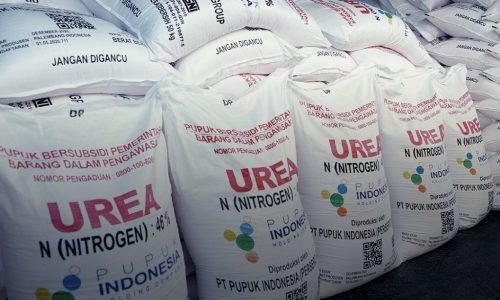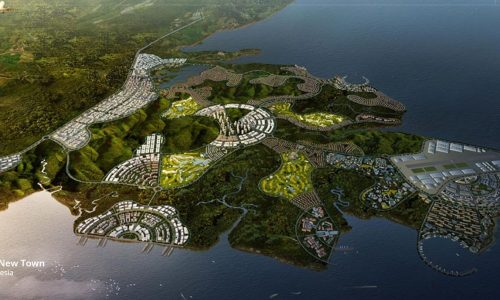The South China Sea conflict and the military competition in the regions has forced Indonesia to modernize its defense industry. To anticipate the heightened conflict, Indonesia has purchased new jet fighters and submarines.
“The Ministry of Defense will always strengthen the Navy,” said Defense Minister Prabowo Subianto when meeting with the newly appointed Navy Chief of Staff Admiral Muhammad Ali on January 3, 2023.
During the meeting, Ali explained to Prabowo his vision to develop the power of professional, modern and tough navy to achieve high readiness in implementing the tasks assigned by the state.
Ali also delivered his support to Prabowo in meeting the needs of military armament. He reiterated that the navy is focusing its efforts to achieve an operational power. Currently, the defense ministry in cooperation with state-owned shipbuilder company PT PAL are repairing and increasing the capacity of 41 Navy’s ships.
Modernization in 10-15 years of strategic planning
Defense ministry former director of technology and industry Maj. Gen. (ret.) Jan Pieter Ate said that currently Indonesia has been focusing the modernization of its military armaments on the Navy and the Air Force.
“The prominent modernization is in the air and sea defense, including by the procurement of French jet fighters Rafale and strategic transportation aircraft C130 and the modernization of warships including submarine from French Naval Group,” he told Indonesia Business Post on January 4, 2023.
On February 10, 2022, French Minister of the Armed Forces Florence Parly announced on Twitter that Indonesia had ordered 42 Rafale jet fighters from France. In addition, two Scorpene submarines made in France were also identified.
Indonesian defense ministry had announced on the same day that it had signed a cooperation agreement with French company Dassault to purchase 6 Rafale jet fighters. However, the statement did not mention another 36 Rafale fighter jets and two Scorpene submarines. It is possible that 42 fighter jets could become part of a long-term contract in the future.
In addition to purchasing six fighter jets and two submarines, PT PAL also signed an agreement with Naval to establish a joint research and development center for submarines. “PT PAL will build the Scorpene submarine and it is the result of the transfer of technology and the implementation of research and development with Naval Group,” PT PAL spokeswoman Yusi Nisa said.
Read also: French Rafale jet fighters first shipment to arrive in 2023
Ate said the 21st Century War would require heavy technology armaments. Therefore, Indonesia needs to modernize its weaponry system, including for the air force and the navy. “We have to question the defense concept that become a base for the development of the military power,“ he explained.
Indonesia, he said, would need to have a 10- to 15-year of strategic planning that contain the projection of the defense situation and design capability plan. Based on the strategic plan, the defense ministry then decides what kind of the armament they want to buy and when.
“The strategic plan should be published because the people has the right to know. If not, the people will ask where the money to buy the weapons come from? The spending for defense cannot be based on the allocation of the State Budget, but also the national interest,” he added.
Non state buget source of funding
As a vast archipelagic country, the purchase of modern and expensive military armament is reasonable for Indonesia. “If we combined the role and the size of Indonesia [as a country] and then perceive the existing capability, it is reasonable that Indonesia modernize its weaponry system in such magnitude,” Ate explained.
The state budget, he said, would not be enough to meet all the needs to modernize Indonesian military armament. He argued that Indonesia could not base its defense spending on the state budget allocation. “If we see Australia, recently, the prime minister announced the additional defense budget is US$ 270 billion. That’s how we should manage our defense. The defense sector should be separated from the development of non-defense sector,” he explained.
Read also: PT PAL to buy Scorpene submarines from Naval
The government, in this context the president and the defense minister, should seek another source of funds from strategic source of revenues. For example, Indonesia could trade off the nickel, copper, and other commodities to purchase weaponry.
Military expert Khairul Fahmi from the Institute of Security and Strategic Studies (ISESS) said there were two schemes of financing the military armament for the government: domestic and foreign loans.
“For infrastructure development and the procurement of the military armament, we should prioritize state budget financing or domestic loan. While for import of military armaments, we can use approved foreign loan scheme,” Fahmi explained.
Geopolitical threats
Ate explained that the South China Sea issue was one of the potential threats in the region. Therefore, Indonesia should address the threat by modernizing its military armament although the foreign ministry always said Indonesia did not take side in the South China Sea dispute. “It is wrong,” he said.
In reality, China has claimed that North Natuna Sea is part of the South China Sea. Indonesia should be well informed that there was one country which has disrupted Indonesia’s soverignty in the North Natuna Sea. “The question is if China claimed the North Natuna Sea, should we stay silent?” he asked.
The second challenge is that Southeast Asia is the corner stone of Indonesia’s foreign policy. In this context, Indonesia should show itself as a major country in the region.
At the same time, Australia and India have continued to increase its defense budget. Recently based on the AUKUS (Australia, the United Kingdom, and the United States) agreement, Australia has procured 12 nuclear powered submarines and allocated additional defense budget for US$ 270 billion.
Read also: Indonesia purchases French jets: Leaning to Western bloc?
Indonesia should not compare itself with its neighbors such as Malaysia and the Philippines. Instead, Indonesia should compare itself with countries that have the potential to attack if a regional conflict happens, such as Australia or Saudi Arabia.
“Political science teaches us that there is no permanent friend. We cannot say Australia is our close friend. It is not right in international relation. It happened in 1998-1999 during the East Timor independence referendum. How can we say that Australia is not our enemy? In international relation, a stronger country must be a threat for a weaker one,” Ate explained.
Fahmi said the modernization of Indonesia military armament would increase the country’s military capability. In 2022, Indonesian military ranked 15th in the world based on Global Fire Power index. The rank increased one point from 2021. Indonesia also ranked 4th position in Asia Pacific after the US, Russia and China. “However, it is not enough to claim that Indonesia has the capacity as a balance power in the region,” he explained.
Dependency on foreign technology
One of the challenges that Indonesia faces in its modernization of defense equipment is its dependency on foreign technology.
Fahmi said that Indonesia would need to change its strategy in developing its military strength that relies on foreign technology to gradually shift to domestic defense industry. Domestic industry will support the growth of national defense industry.
“We cannot produce all military armaments. At least in the next 20 years, the composition of Indonesia defense technology will be 60% foreign technology and 40% domestic industry. Currently it is 80:20,” he said.
Another challenge is the existence of pseudo defense industry in the domestic industry. The pseudo defense industry is defense companies that do not meet three criteria: Delayed projects and their service qualities are not satisfying; unbankable companies; and have no patents.









